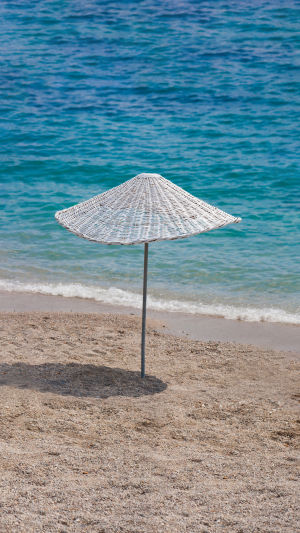The beach, with its vast sandy expanses and the soothing rhythm of waves crashing, provides an ideal getaway for relaxation and leisure activities.
It is a place where people of all ages can find enjoyment, from building sandcastles to surfing the waves.
However, while the beach provides abundant opportunities for entertainment, it also demands respect for nature and caution regarding sun exposure. This article explores the various forms of beach entertainment and offers essential sun protection tips to ensure a safe and enjoyable experience.
<b>Beach Entertainment</b>
The beach is a versatile playground that caters to diverse interests. One of the most beloved activities is swimming. Whether you're wading in the shallow waters or venturing further into the surf, swimming offers a refreshing way to cool off and exercise.
For those who prefer staying dry, beach volleyball is a popular choice, combining physical activity with social interaction. The sandy court provides a forgiving surface, making it a fun and less injurious sport. Water sports enthusiasts have a plethora of options, from surfing and paddleboarding to jet skiing and windsurfing. These activities not only provide thrilling experiences but also help in building strength and coordination.
Snorkeling and scuba diving provide an opportunity to explore the underwater world, enabling participants to closely observe marine life. These activities promote an appreciation for the ocean's biodiversity. For families, beach outings often include activities like building sandcastles, flying kites, and collecting seashells. These simple pleasures foster creativity and bring people together. Picnicking by the shore, with the soothing sound of waves in the background, enhances the experience, making it both relaxing and enjoyable.
<b>Sun Protection Tips</b>
While the beach is synonymous with fun and relaxation, it also exposes visitors to the sun's ultraviolet (UV) rays, which can cause skin damage, sunburn, and increase the risk of skin cancer. Therefore, adequate sun protection is paramount.
1. Use Sunscreen: It's vital to apply sunscreen that provides broad-spectrum protection with an SPF of at least 30. Broad-spectrum sunscreens protect against both UVA and UVB rays. Sunscreen should be applied generously on all exposed skin at least 15 minutes before going outside and reapplied every two hours, or more often if swimming or sweating. It's important not to overlook often-missed areas like the ears, back of the neck, and tops of the feet.
2. Wear Protective Clothing: Clothing can act as a physical shield against UV rays. Wearing long-sleeved shirts, long pants, and a wide-brimmed hat can significantly reduce sun exposure. Clothes with a UPF (Ultraviolet Protection Factor) rating offer added protection. For water activities, consider wearing a rash guard or swim shirt.
3. Seek Shade: Whenever possible, seek shade, especially during the peak sun intensity hours between 10 a.m. and 4 p.m. Using beach umbrellas, tents, or cabanas can provide relief from direct sunlight. Sitting under natural shade, such as trees, is also beneficial.
4. Wear Sunglasses: Sunglasses are not just a fashion accessory; they are essential for protecting your eyes from UV rays. Prolonged sun exposure can damage the eyes and increase the risk of cataracts. Choose sunglasses that block 100% of UVA and UVB rays for optimal protection.





